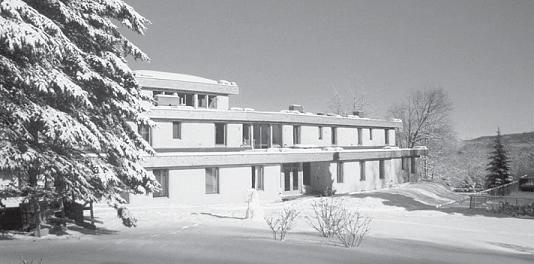
THIS IS A BOOK ABOUT WALLS—about how to design and build beautiful (and hopefully durable) walls of bales and plaster. It is written with one intention, to provide you with the background necessary to think your way through a straw bale project even in an extremely cold and/or wet climate. It is emphatically not a book that aims to prescribe one best way of doing things; part of what is exciting about bale and plaster walls is that they are not yet (and perhaps never will be) streamlined into a “one-size-fits-all” system.
This is also not a book about the general topic of building design. Materials are only a small portion of good design; they are subservient to the many interlocking issues—the needs of the occupant, aesthetics, energy use, site, structure, and budget among them—that weave a design program. This book does not attempt to lead the reader through all the stages of this intricate process. Many good books already do that. Instead, it looks at design issues from the specific perspective of the straw bale builder, and at each turn, offers strategies for how to integrate these types of walls into the larger process of design.
The central text of this book revolves around design issues. We hope these will be of use to anyone—architect, builder, owner-builder, Renaissance woman—who is thinking about how best to detail a bale-walled building. Some issues that are primarily the concern of owner-builders are covered in sidebars, as are some construction issues. Part 1 of the book, and most notably chapter 3 (“Plans, Permits, and Project Management”) is written with owner-builders particularly in mind.
Wherever possible, we have offered our opinion on the efficiency of a particular method or durability of a particular detail. You must understand that while we (and the many others who have contributed ideas to this book) have been at this work for some time, we don’t have all the answers to all the questions about straw bale construction. Much experimentation, systematization, and testing remains to be done. The goal of this book is to supply you with the best of the tools now available, so that you may begin to participate in this process. We hope the material that follows is useful to you, and that your bale adventure is as fun and rewarding as ours has been.

All building sites produce waste. On a straw bale construction site, the waste straw can be used as mulch!
Keep
those Bales
Dry!
The basic principles of bale construction, especially crucial in cold and/or wet climates, can be broken down as follows. Each of these is explored in substantial detail in later chapters, but just to start off with the big picture, we’ve herded them all together, here. The overriding design goal in straw bale construction is: Keep those bales dry! The way to accomplish that goal is to consider these elements:
Siting
The site, which includes climate, local landforms, vegetation, and the character of the neighborhood, is the number one factor that determines whether bales are a good choice for a wall material, and how they should be finished.
Architectural Features
Precipitation is the greatest threat to bale walls; to a certain degree, site features can be ameliorated by roof overhangs, porches, connected sheds, and other features that help protect the walls from rain and snow.
Isolation from Ground Moisture
Bales should be held at least as far from finished grade as specified by the local code minimum for wood. They must also be protected from moisture that can make its way up through the foundation.
Flashing Details
Flashing and dripsills are crucial to prevent concentrated volumes of water from leaking into and sheeting down the wall.
Choice of Finish
There is no standard finish for straw bale walls. Choice of finish is an act of balance between the structural strength of more rigid materials and the higher drying potential and reduced cracking of more flexible materials.
Vapor-Permeable Construction
Whenever possible, those materials that are more vaporpermeable are a safer choice than those which are less so. In cold climates, this is especially true on the exterior.
Airtight Construction and
Mechanical Ventilation
Airtight construction and mechanical ventilation ensure good indoor air quality, reduce energy use, and control interior humidity levels, thereby greatly reducing interior moisture sources as a potential threat to bale walls.
Moisture Sensors
Without sensors, there is no way of knowing what is really going on inside the walls over the long term. All new bale houses should have at least a few, as insurance against moisture problems, and to allow residents to contribute to the body of knowledge about building with straw bales.

Straw bale techniques are becoming popular in the north even for large buildings.